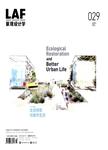Towards Hazard-Resilience Cities: Comparative Research on Resilience-related Policies and Local Practices in Five Cities Worldwide
作者机构:School of Architecture and Planning Hunan University Changsha 410082 China Manchester Urban Institute University of Manchester Manchester M13 9PL UK School of Earth and Ocean Science Cardiff University Cardiff CF10 3YE UK School of Geography and Planning Cardiff University Cardiff CF10 3WA UK Department of Urban and Regional Planning University of Illinois Urbana-Champaign Champaign IL 61820 USA School of Architecture Planning and Environmental Policy University College Dublin Dublin D14 E099 Ireland African Climate and Development Institute University of Cape Town Cape Town 7700 South Africa
出 版 物:《Landscape Architecture Frontiers》
年 卷 期:2024年第12卷第1期
页 面:26-46页
主 题:Hazard Resilience Policy Framework Local Practice Comparative Analysis Resilience Pathway
摘 要:This study provides a comparative analysis of the journey toward hazard-resilience by examining the resilience-related policies and local practices in five exemplary cities worldwide: Cape Town (South Africa), Greater Manchester (UK), Changsha and Wenchuan (China), and San Juan City (Puerto Rico). Through a conceptual framework encompassing seven interrelated dimensions of the social-environmental system, this paper delves into how hazard risk is perceived and resilience is approached in both policy documents and local practices. Policy reviews reveal distinct strategies among cities. Cape Town employs diverse water-saving measures, addressing drought through water resilience. Greater Manchester focuses on human and organizational aspects in disaster risk reduction. Changsha and Wenchuan prioritize specific disaster response measures, while San Juan tackles environmental and socio-economic challenges through multidimensional actions. Local practices illustrate the effectiveness of bottom-up resilience enhancement, with examples including home drilling in Cape Town and community engagement in Changsha. Despite these efforts, there is a common trend across cities of limited consideration for cultural/worldviews and urban-rural-spatial dimensions. Bridging this gap is crucial for effective risk management and disaster recovery. This study underscores the importance of aligning policy formulation with local practices, prioritizing targeted recovery plans, and expanding considerations to include the urban-rural-spatial dimension. Overall, this research contributes valuable insights to the development of hazard-resilient cities, offering policymakers and planners a foundation to prepare cities for future challenges and foster urban resilience.



